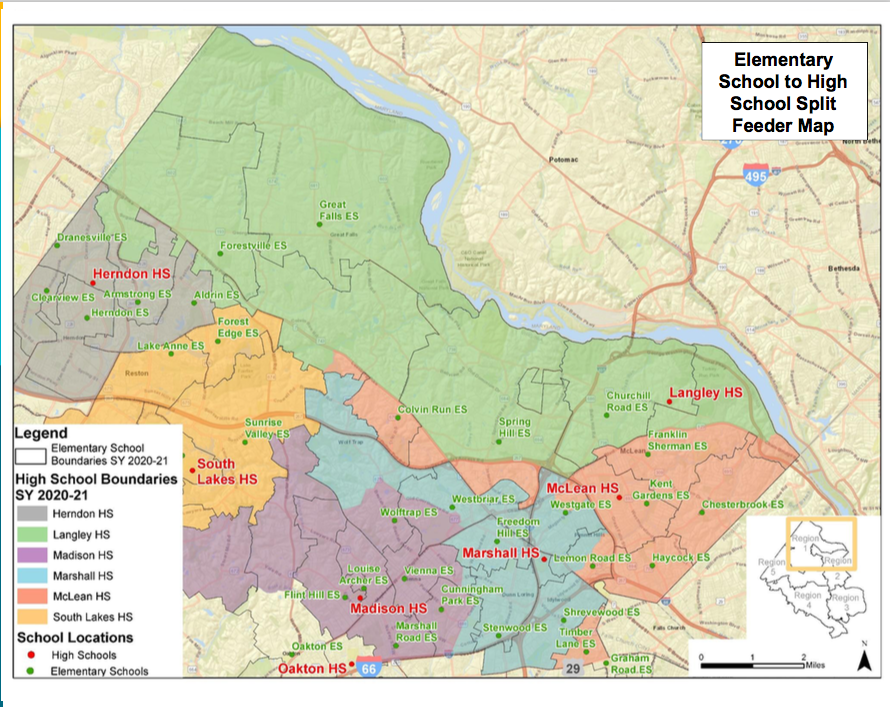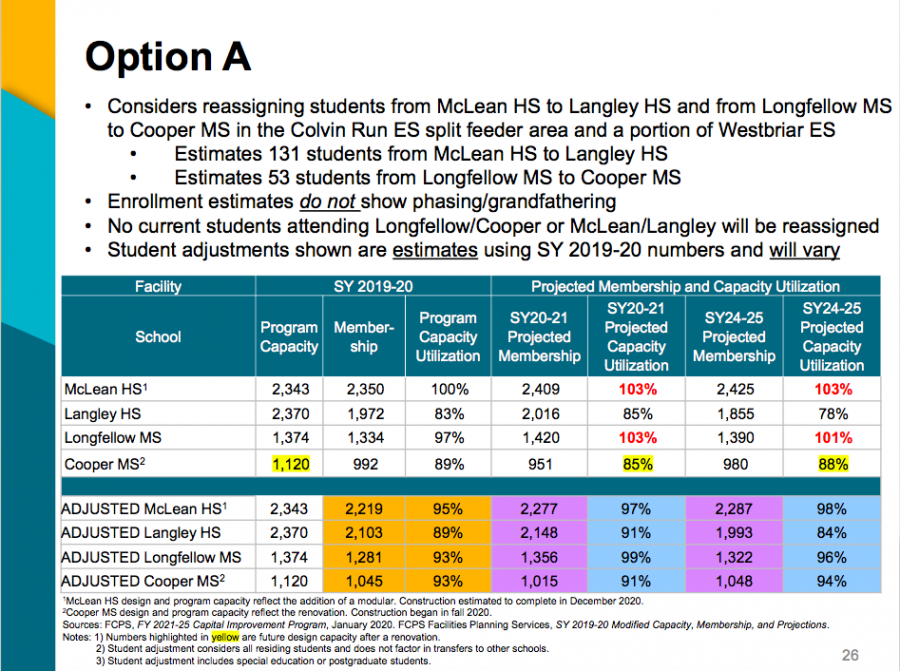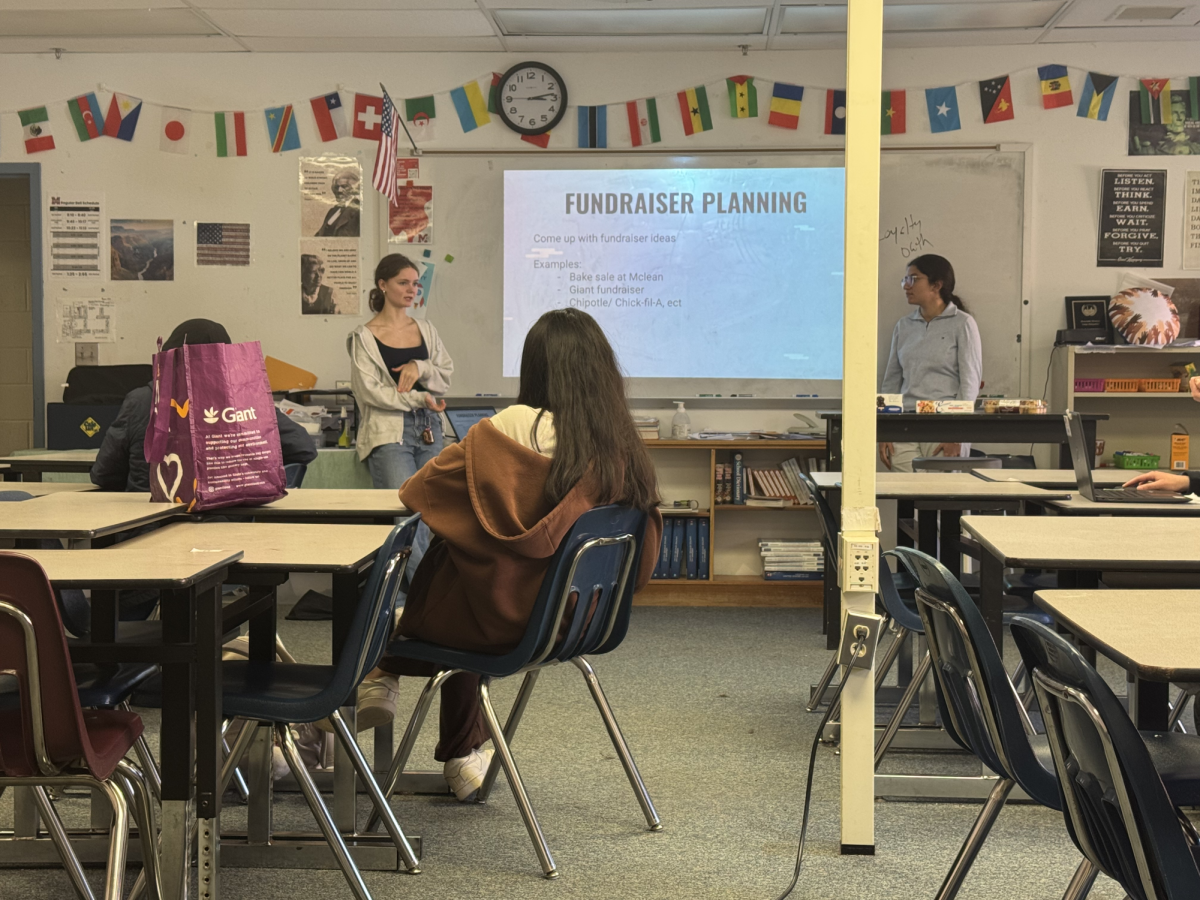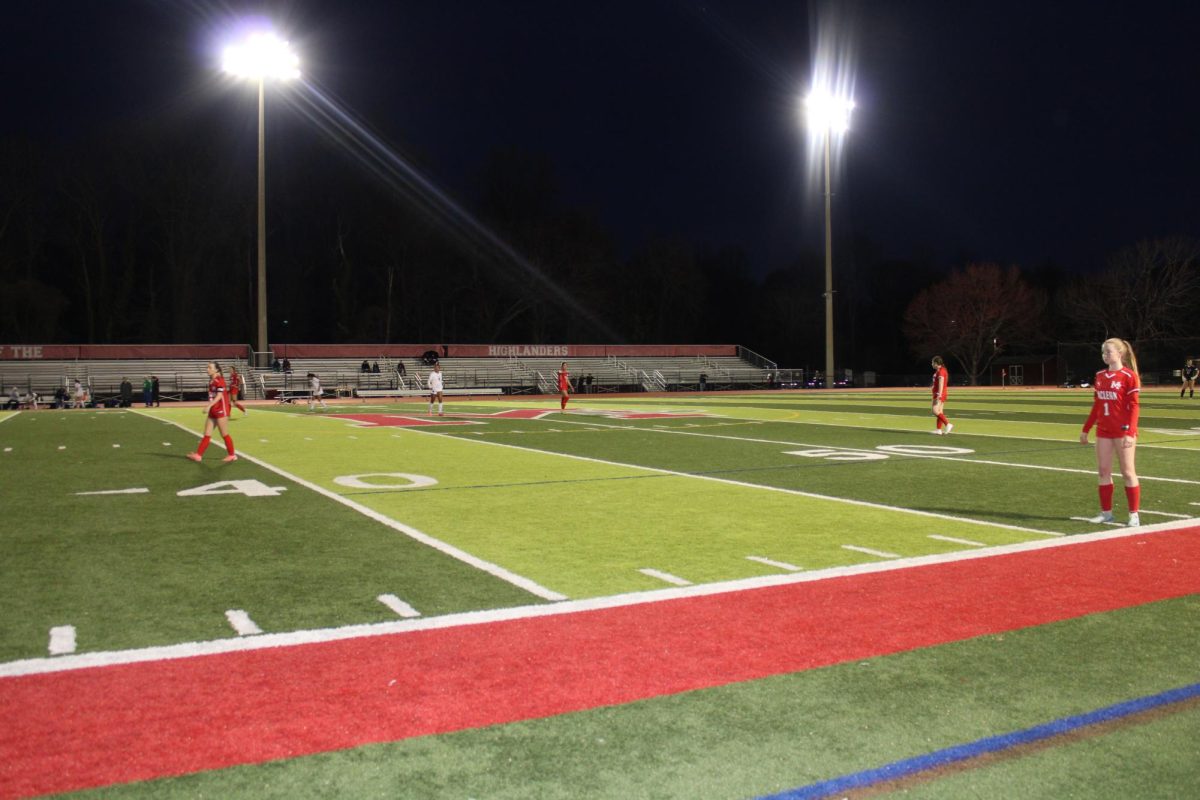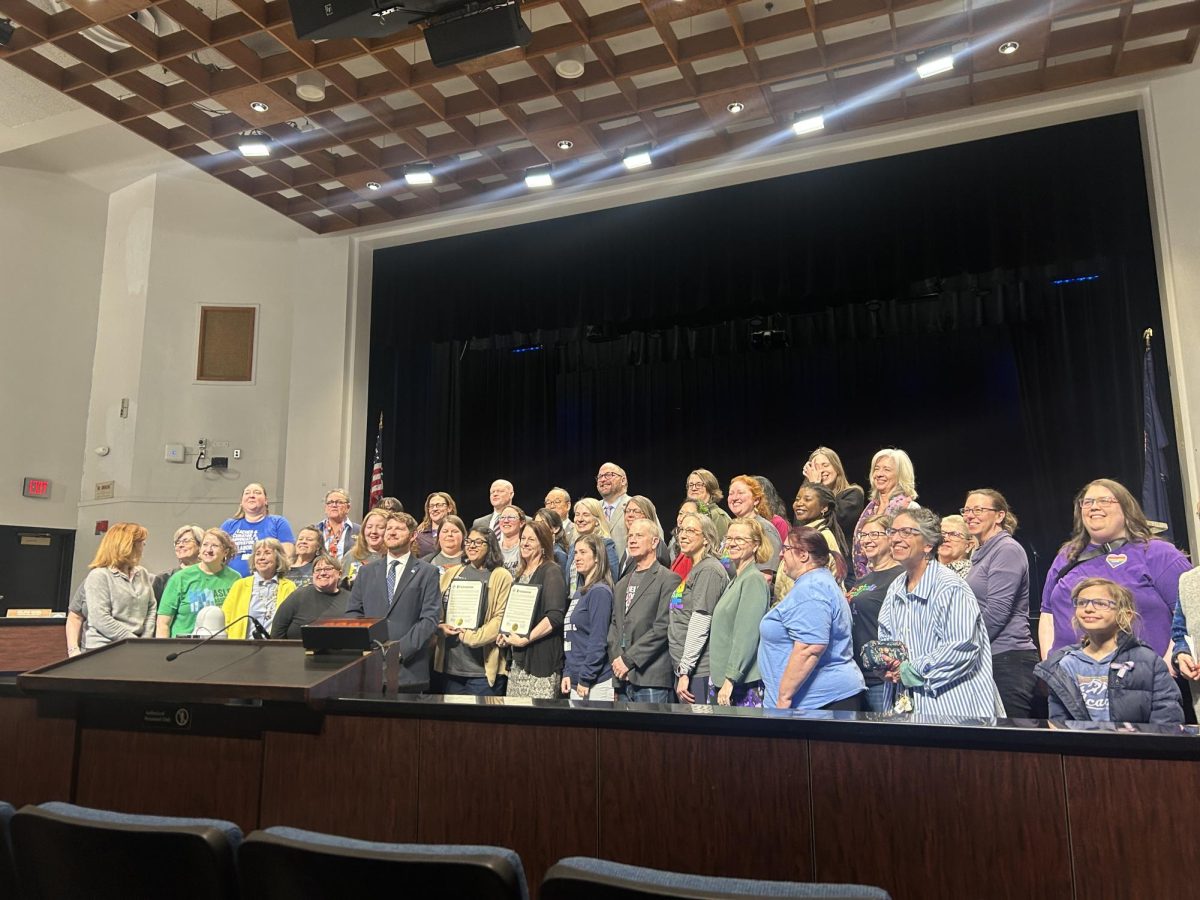Nearly 200 members of the community gathered virtually on Dec. 7 to discuss the issue of overcrowding at McLean High School. The event served as a follow-up to a similar meeting that took place one year ago and focused on boundary adjustments and redistricting.
According to the boundary study data presented at the meeting, 2,350 students are currently enrolled at McLean High School, which was only built to accommodate 1,993 students. The school is at 118% capacity, whereas nearby Langley High School was designed for nearly 400 more students than are currently enrolled.
“If the school is overcrowded, it might prevent us from introducing new programs or different things that we might want to do if we had classroom space,” Dranesville district representative Elaine Tholen said. “As the school becomes over capacity, you don’t have those basic spaces for people to go to the restroom [or] eat their lunch. Even those basic things become an issue.”
Community leaders, alongside school board members, began the meeting by presenting a variety of potential solutions, all of which were designed based on feedback from the boundary adjustment meeting last December.
“We’re really looking at all of the various options that can help,” Tholen said. “We were also pretty careful to try to have representatives from most of the different neighborhoods, and [we are] working with staff to decide the best way to move forward.”
All three options suggest reassigning students from McLean High School to Langley High School and alleviating the load of incoming students in Longfellow Middle School by transferring them to Cooper Middle School.
Option A considers Colvin Run and Westbriar Elementary Schools, two important split feeders. About 130 students would be reassigned to Langley High School, and about 53 would be reassigned to Cooper Middle School. The county projects that it would reduce capacity at McLean to only 97 percent by the following school year.
“My family is in [the] Wolf Trap Woods neighborhood. We support new boundaries that would send us to Cooper and Langley,” one parent wrote in the chat.
Option B looks at the Colvin Run and Spring Hill split feeders. About 190 students would be moved to Langley High School, while around 78 students would be reassigned to Cooper Middle School. The plan is expected to reduce capacity at McLean to only 95 percent by the next school year.
“Options A and B seem to make the most sense,” a parent wrote. “[They would] alleviate capacity at McLean without overwhelming Cooper.”
Option C considers boundary adjustments in the Spring Hill Elementary School split feeder. About 240 students are expected to be reassigned to Langley, and around 113 students would move to Cooper Middle School. If this plan is implemented, the county estimates that capacity at McLean will drop to 91 percent by the following school year. All of the options were met with some criticism.
“Options A and B pull neighborhoods that are entirely single-family homes out of McLean, and Option C pulls almost 250 kids out,” a parent wrote in the chat. “None are attractive and we need information about when a permanent addition can be built at McLean.”
They also presented the possibility for a fourth option, which would keep the original boundaries. Though there still isn’t a definitive timeline, the county hopes to make a decision soon.
“We are planning to make a decision towards the end of January so that, if there’s a change, kids know which high school or middle school to sign up for classes and [so that] the principals can plan,” Tholen said.
Following the initial presentation, parents and students were split into breakout groups to discuss. Many parents were unhappy with the way the meeting was conducted, especially since their microphones were disabled when they returned to the main room. Instead, they communicated fervently through the chat feature.
“Why in the world aren’t we talking with one another to hear what each group reported,” one frustrated parent asked.
As for the productivity of the meeting as a whole, there were mixed opinions.
“I’ve heard very positive feedback on the presentation itself; [it was] much more than what was presented a year ago,” Tholen said. “[But] I myself was a bit frustrated with the breakout sessions and the fact that they went into the breakout sessions without giving people a whole lot of direction.”
Parents and students alike shared similar concerns, with some even calling for the meeting to be rescheduled.
“I do not believe the boundary interest meeting was helpful or a good use of time and resources,” junior Atticus Gore said. “Overall, the solutions the county has proposed for our school are substandard and do not solve any problems.”
Gore, like many others, does not believe that redistricting is the best solution. He instead advocates for a complete renovation of McLean High School, an opinion shared by many students.
“It’s better to renovate the school because I know a lot of people care about school districts and may have put in a lot of effort just to get into the McLean school district,” junior Doris Zhang said. “So I feel like changing the boundaries would be unfair to those people. If [students’] parents want them to stay in the same school district, they would have to move and not everyone has the ability to do that.”
Others at the meeting brought up the fact that, though it would be more cost-effective, redistricting wouldn’t address other prevalent issues at McLean, including its cramped and outdated facilities.
“Moving a maximum of 400 students out of McLean does not resolve the modular or trailer classes and will only provide very temporary relief for McLean,” Gore said. “With the explosive growth coming out of Tysons, the only logical and supportive solution is to expand our school.”
While some attendees were angry that these options were not brought up at the meeting, others pointed out the potential difficulties and disadvantages of a large-scale renovation.
“Unfortunately, what people don’t realize is, [a renovation] takes [much] longer. We [also] have to find the money to do it and allocate those funds. The people [have to] vote on it,” Tholen said. “[A renovation] doesn’t really help us capacity-wise, but it makes it more comfortable for [students]. And it makes it a little bit easier for the teachers to collaborate.”
As the meeting went on, parents fired away in the chat, airing grievances of all kinds. Some were worried about having their children at two different schools, while others were concerned about the somewhat unclear timeline. One thing they could all agree on, however, was that something must be done.
“People just want a decision, especially these neighborhoods that are likely to be moved,” Tholen said. “Even if we decide, OK, no, we’re not doing anything, let’s just lay that aside, and let’s start approaching this another way.”


